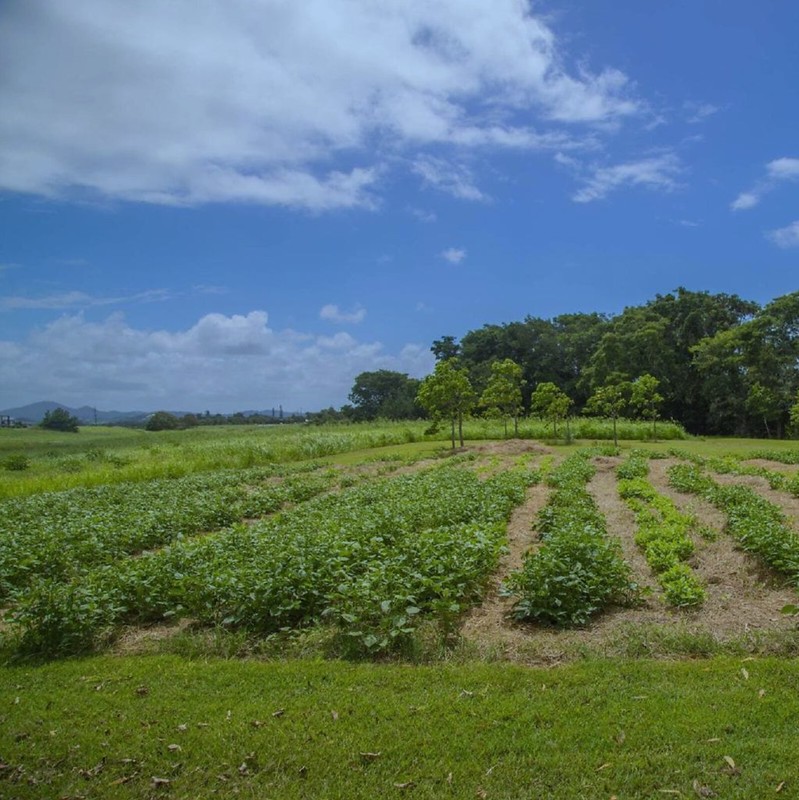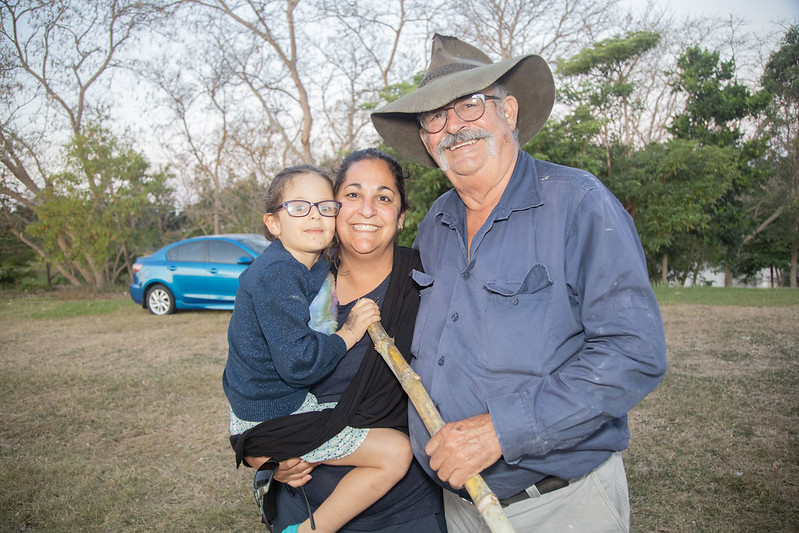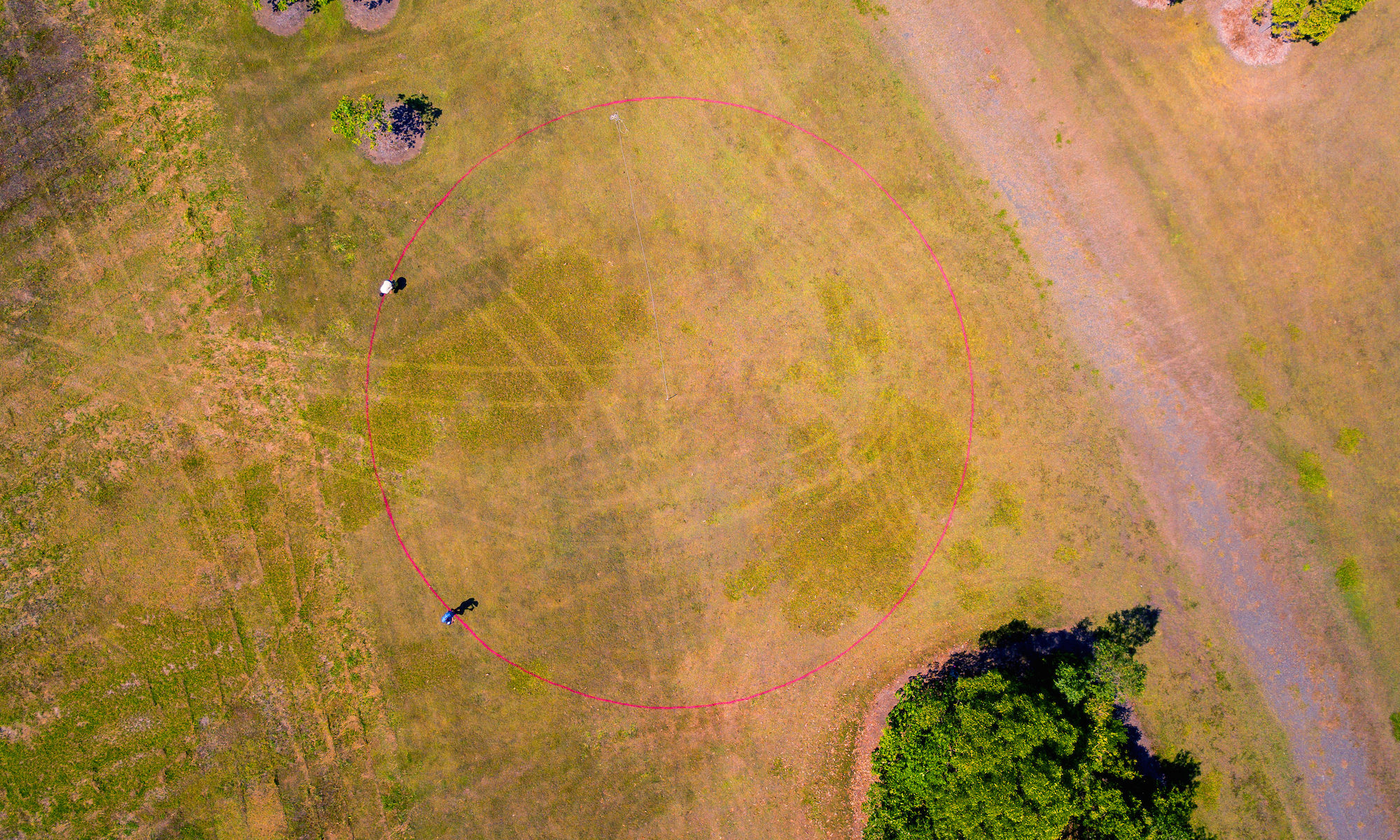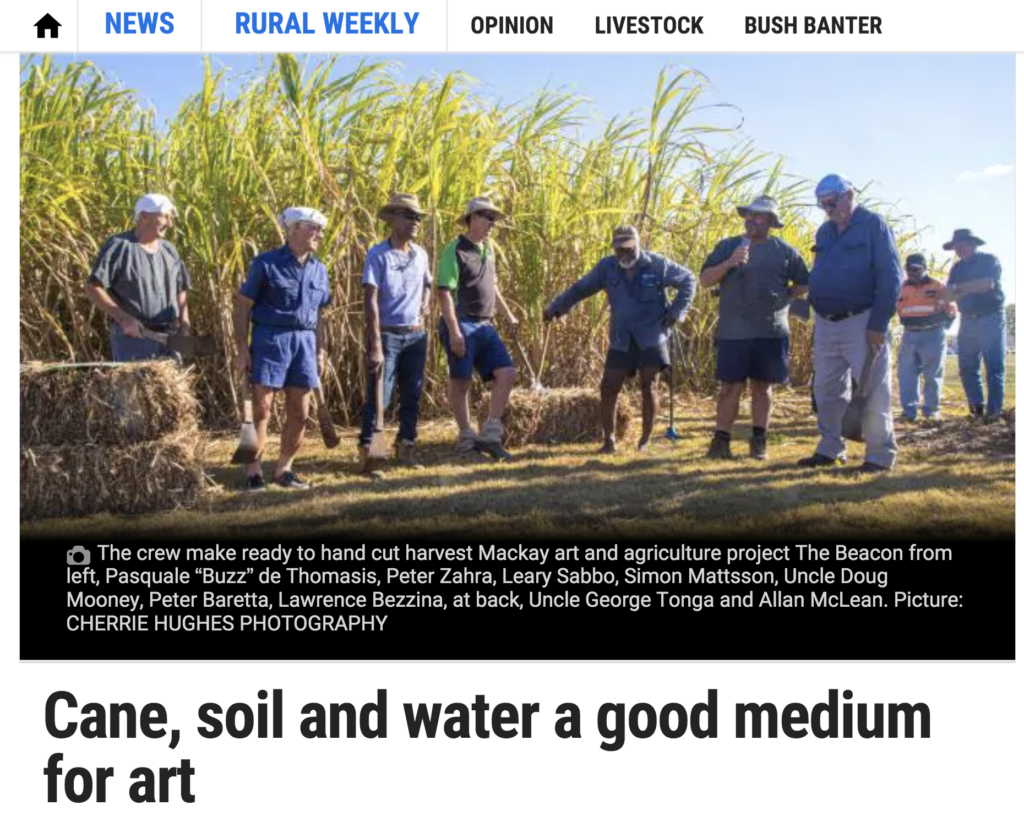This terrific article was written for the Weekly Times / Rural Weekly by Kirili Lamb, a journalist who has been following along for several months. You can read her previous articles about the Watershed Land Art Project here and here.
[Download a copy of the article as a PDF here.]
Cane, soil and water a good medium for art
by Kirili Lamb
October 14, 2019
A CANE stand on an urban hilltop may have been grown with new approaches, but it was certainly reaped in the old school sweat-of-the- brow hand cut method.
Fusing regenerative agriculture, art and community, the two year Watershed Land Art sugarcane project, The Beacon, was harvested on Friday, October 4 at Mackay Regional Botanic Gardens.
The project created arts and community events around the growing of a demonstration stand of chemical free cane produced using regenerative farming methods, and its culminating harvest event, Old Ways, New Ways, brought together a host of generations and cultural groups associated with the region’s sugar industry, including members of the Yuwibara, Australian South Sea Islander, and European-descended communities, together with farming, education and land management groups.
The harvest event at the 26m diameter stand was based on traditional cut out celebrations, with participants bringing contributions for a shared harvest feast, combined with a live cane harvesting performance, sugarcane juice making, storytelling, science and movies.
The event was opened by Stephen Andrew, Member for Mirani, Australian South Sea Islander descendant and champion of regenerative agriculture. Member for Mackay Julieanne Gilbert was also present.
Starrett Vea Vea, chairman of Mackay and District Australian South Sea Islander Association, said that Old Ways, New Ways was a great opportunity to bring cutting- edge ecological farmers of 2019 together with the cultures that built Mackay’s sugarcane industry.
“It’s the first time that the Maltese, Italian, and Australian South Sea Islander groups have come together for a celebration like this,” he said.
“Old Ways New Ways, a collaboration between MADASSIA, Mackay Maltese Club Inc., Mackay and District Italian Association Inc, and the team of artists and farmers behind the Watershed Land Art Project, celebrated the sugarcane families who for so many years have been the heart of Mackay (the “old ways”) as well as the growing movement of regenerative agriculture for soil health and human health (the “new ways”), seeking to reflect on the way things were, and to inspire future directions that aim to help our ecosystems flourish.”
While community participants hand cut the cane, President of Mackay Italian Association and local historian Carmel Baretta talked the crowd of several hundred through sugar industry history and how conditions were in the field for hand cutters.
A film was also shown, created through the project and led by Cherrie Hughes, where younger generations of the community interviewed older generations, while artist in residence Kim Williams roused event-goers with a new audience participation song, the Mackay Tarantella, also written for the event.

Artists Lucas Ihlein and Kim Williams have been leading the Watershed Land Art Project. The artists have had great success with community engagement around crops of legumes, sunflowers and sugarcane at Mackay Regional Botanic Gardens over the last couple of years.
“Regenerative farming is essential for both environmental and human health, and this project is an excellent demonstration of how innovations in sugarcane farming can have a positive effect on water quality in the Great Barrier Reef,” Lucas said.
“As artists, we are outside of farming, but we do art projects around agriculture and land management.
“We’ve been working up here for five years now, just learning stuff around what some of the issues for the sugar cane industry, what some of the pressures that are put on them, such as the recent reef regulations and some of the constraints and barriers to behaviour change. What are the cultural and social barriers?
“We listen to the experts, on farming, on their community, then we have tried to create these social situations where people can come together in unusual ways. For example, transplanting a section of Simon Mattsson’s farm to the Botanic Garden’s means that it’s available for the public to look at and get involved in.”
As a way of helping agriculture straddle the space between industry and community, each agricultural transition at the site has also been marked with a community event. Regenerative cane grower and 2014 Nuffield Scholar Simon Mattsson has been involved in the project since its inception, with cane for the demonstration site coming from his Marian farm, and now, cyclically returning there for re-plant.
“It’s been an interesting project on a number of fronts. I’m a farmer, so I’m always interested in the agricultural side of it, but what Lucas and Kim have brought to the project is that community connection through art,” Simon said.
“And that’s a really key part of the project, making those connections.”

Simon said that the cane grown on the site had been successful on a number of fronts, showing a CCS comparable to commercially grown cane of the same variety, and showing some strong results in improving the soil quality on-site.
There were initial challenges of the site, which included fairly compacted soil. Water run-off tests were conducted by Catchment Solutions in May this year, the soil inside the site having had time to develop high organic matter content and surface mulch, following successive mulching down of legume and sunflowers plantings. Sunflowers also offer additional benefits with a soil-breaking tap root, which, as it breaks down creates a carbon path for water and nutrient delivery in-soil.


“Measurements were taken to try and quantify water infiltration rates, so water was applied both inside and outside The Beacon,” Simon said.
On the grassy area outside The Beacon, the run-off rate was at 31.2mm/hr, and began after only eight minutes, while inside the plot, the rate stood at 8.49mm/hr, and took 20 minutes before run-off commenced, with negligible nutrient content and only very faint traces of synthetic chemicals already present on site before the establishment of The Beacon.
“That’s an outstanding result, and it demonstrates much better infiltration rates,” Simon said.
“That water infiltration and retention leads to all sorts of good outcomes, such as increased production, along with environmental outcomes like helping to retain applied nutrient in-field.”
He hoped success of the demonstration site, along with results being shown on farms like his family’s Marian cane farm, would encourage others.
“If regenerative agriculture principles could be adopted across the region, then the outcomes for productivity and environmental benefit would be quite considerable,” he said.
“But it takes time, effort and education to be able to do that, and change can be the hardest thing, a lot of people quite naturally resist change.
“Certainly the work I’ve done on my farm, and what we’ve demonstrated at The Beacon, is that the principles work, but there would probably need to be larger commercial trials.”
Simon pointed to work being done in the area now by Sugar Research Australia as a positive way forward, that may lead to regenerative growing principles becoming more mainstream over the next five years.
A positive sign lay in the enthusiasm of elders from long-time sugar cane farming families for the project.
“I was most appreciative of their enthusiasm. They have really connected with the project over the past few months,” Simon said.
“That’s probably the most outstanding outcome of The Beacon project – that bringing together of the South Sea Islander, Maltese and Italian communities around sugar cane, and around the possibility of adopting new ways of doing it to better enhance environmental outcomes.”


